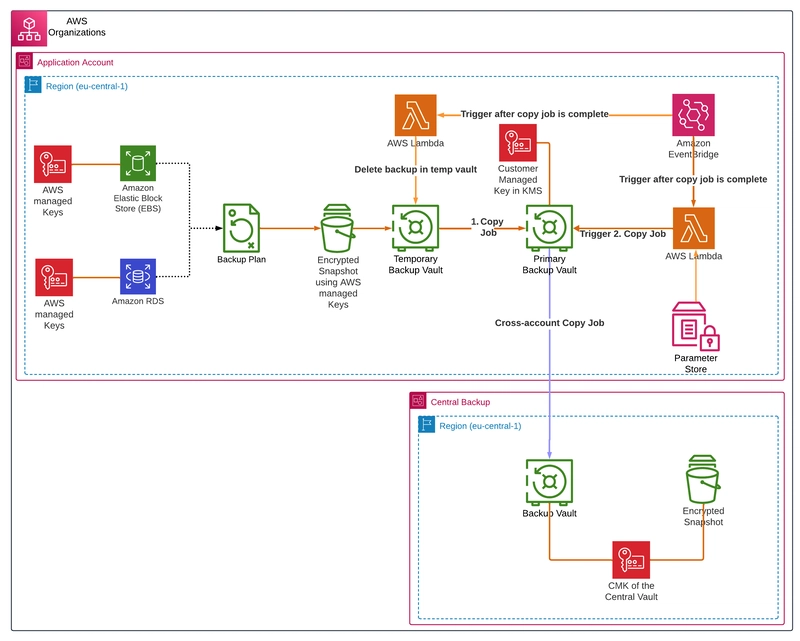A Simple Guide to Read Rust Source Code Effectively
1. Start with Fundamental Modules These modules are used in almost every Rust program, and understanding them is the foundation of learning the Rust standard library. std::option::Option and std::result::Result Option is used to represent cases where a value may be absent, while Result is used for error handling. Understanding the implementation of these enums is crucial because they are core mechanisms in Rust for avoiding null references and capturing errors. Learning Path: Review the documentation for these two modules, then analyze their specific implementations in the source code. std::vec::Vec Vec is Rust’s dynamic array that automatically manages memory. By studying Vec, you can understand how Rust implements safe memory management. Learning Path: Read the Vec documentation and examine how its underlying implementation handles memory allocation and deallocation. std::string::String String is a mutable UTF-8 encoded string. Gaining an in-depth understanding of its implementation helps you grasp efficient string operations. Learning Path: Check the String documentation and study its relationship with Vec. 2. Understand Core System Interface Modules The system interface modules in the Rust standard library interact with the operating system and low-level hardware. std::fs and std::io The fs module provides filesystem operations, while the io module encapsulates input/output operations. They are core modules for system programming. Learning Path: Read the documentation for fs and io, analyze how they encapsulate system calls, and study how they use Result for error handling. std::thread and std::sync Rust’s concurrency model is based on threads and synchronization primitives (such as Mutex and Arc). Studying these modules helps you understand how Rust achieves thread safety and data sharing. Learning Path: Read the thread and sync documentation, and study the implementation of thread creation and data sharing. 3. Explore Memory Management and Smart Pointers Memory management is one of Rust’s key features, and understanding smart pointers and memory management modules is crucial. std::rc::Rc and std::sync::Arc Rc and Arc are reference-counting smart pointers used in single-threaded and multi-threaded environments, respectively. Studying their implementation helps you understand how Rust manages shared memory. Learning Path: Read the Rc and Arc documentation, and analyze the underlying implementation of reference counting. std::cell::RefCell and std::cell::Cell RefCell and Cell are smart pointers used for runtime borrow checking. Learning Path: Review the documentation for RefCell and Cell and study their internal borrow checking mechanisms. 4. Further Study on Concurrency and Asynchronous Programming std::future and async/await Future is the core of Rust’s asynchronous programming. Understanding how async/await works helps you master Rust’s async programming model. Learning Path: Read the Future documentation and analyze the source code to understand how async/await is transformed. 5. Master Error Handling and Logging Systems std::error::Error and std::result::Result Error handling is an essential part of Rust. Understanding how the Error trait and Result enum work together helps you grasp Rust’s error-handling mechanisms. Learning Path: Review the Error and Result documentation. std::log and env_logger Rust’s logging system allows developers to configure log output flexibly. Learning Path: Read the log and env_logger documentation. 6. Safely Using unsafe The unsafe keyword enables Rust to perform low-level system programming, but it must be used cautiously to avoid undefined behavior. Learning Path: Understand the use cases and limitations of unsafe, and study its implementation in the standard library, such as the memory management of Vec. 7. Get Familiar with the Macro System Rust’s macro system allows code generation at compile time. It can be learned from two aspects: declarative macros (macro_rules!) and procedural macros. Declarative Macros (macro_rules!) Understand the syntax and use cases of declarative macros and analyze commonly used macros in the standard library, such as vec! and println!. Procedural Macros Procedural macros are more powerful and allow manipulation of the abstract syntax tree (AST). Studying well-known procedural macro libraries (such as serde) helps deepen your understanding. We are Leapcell, your top choice for hosting Rust projects. Leapcell is the Next-Gen Serverless Platform for Web Hosting, Async Tasks, and Redis: Multi-Language Support Develop with Node.js, Python, Go, or Rust. Deploy unlimited projects for free pay only for usage — no requests, no charges. Unbeatable Cost Efficiency Pay-as-you-go wit

1. Start with Fundamental Modules
These modules are used in almost every Rust program, and understanding them is the foundation of learning the Rust standard library.
-
std::option::Option and std::result::Result
-
Optionis used to represent cases where a value may be absent, whileResultis used for error handling. Understanding the implementation of these enums is crucial because they are core mechanisms in Rust for avoiding null references and capturing errors. - Learning Path: Review the documentation for these two modules, then analyze their specific implementations in the source code.
-
-
std::vec::Vec
-
Vecis Rust’s dynamic array that automatically manages memory. By studyingVec, you can understand how Rust implements safe memory management. -
Learning Path: Read the
Vecdocumentation and examine how its underlying implementation handles memory allocation and deallocation.
-
-
std::string::String
-
Stringis a mutable UTF-8 encoded string. Gaining an in-depth understanding of its implementation helps you grasp efficient string operations. -
Learning Path: Check the
Stringdocumentation and study its relationship withVec.
-
2. Understand Core System Interface Modules
The system interface modules in the Rust standard library interact with the operating system and low-level hardware.
-
std::fs and std::io
- The
fsmodule provides filesystem operations, while theiomodule encapsulates input/output operations. They are core modules for system programming. -
Learning Path: Read the documentation for
fsandio, analyze how they encapsulate system calls, and study how they useResultfor error handling.
- The
-
std::thread and std::sync
- Rust’s concurrency model is based on threads and synchronization primitives (such as
MutexandArc). Studying these modules helps you understand how Rust achieves thread safety and data sharing. -
Learning Path: Read the
threadandsyncdocumentation, and study the implementation of thread creation and data sharing.
- Rust’s concurrency model is based on threads and synchronization primitives (such as
3. Explore Memory Management and Smart Pointers
Memory management is one of Rust’s key features, and understanding smart pointers and memory management modules is crucial.
-
std::rc::Rc and std::sync::Arc
-
RcandArcare reference-counting smart pointers used in single-threaded and multi-threaded environments, respectively. Studying their implementation helps you understand how Rust manages shared memory. -
Learning Path: Read the
RcandArcdocumentation, and analyze the underlying implementation of reference counting.
-
-
std::cell::RefCell and std::cell::Cell
-
RefCellandCellare smart pointers used for runtime borrow checking. -
Learning Path: Review the documentation for
RefCellandCelland study their internal borrow checking mechanisms.
-
4. Further Study on Concurrency and Asynchronous Programming
-
std::future and async/await
-
Futureis the core of Rust’s asynchronous programming. Understanding howasync/awaitworks helps you master Rust’s async programming model. -
Learning Path: Read the
Futuredocumentation and analyze the source code to understand howasync/awaitis transformed.
-
5. Master Error Handling and Logging Systems
-
std::error::Error and std::result::Result
- Error handling is an essential part of Rust. Understanding how the
Errortrait andResultenum work together helps you grasp Rust’s error-handling mechanisms. -
Learning Path: Review the
ErrorandResultdocumentation.
- Error handling is an essential part of Rust. Understanding how the
-
std::log and env_logger
- Rust’s logging system allows developers to configure log output flexibly.
-
Learning Path: Read the
logandenv_loggerdocumentation.
6. Safely Using unsafe
The unsafe keyword enables Rust to perform low-level system programming, but it must be used cautiously to avoid undefined behavior.
-
Learning Path: Understand the use cases and limitations of
unsafe, and study its implementation in the standard library, such as the memory management ofVec.
7. Get Familiar with the Macro System
Rust’s macro system allows code generation at compile time. It can be learned from two aspects: declarative macros (macro_rules!) and procedural macros.
-
Declarative Macros (
macro_rules!)- Understand the syntax and use cases of declarative macros and analyze commonly used macros in the standard library, such as
vec!andprintln!.
- Understand the syntax and use cases of declarative macros and analyze commonly used macros in the standard library, such as
-
Procedural Macros
- Procedural macros are more powerful and allow manipulation of the abstract syntax tree (AST). Studying well-known procedural macro libraries (such as
serde) helps deepen your understanding.
- Procedural macros are more powerful and allow manipulation of the abstract syntax tree (AST). Studying well-known procedural macro libraries (such as
We are Leapcell, your top choice for hosting Rust projects.
Leapcell is the Next-Gen Serverless Platform for Web Hosting, Async Tasks, and Redis:
Multi-Language Support
- Develop with Node.js, Python, Go, or Rust.
Deploy unlimited projects for free
- pay only for usage — no requests, no charges.
Unbeatable Cost Efficiency
- Pay-as-you-go with no idle charges.
- Example: $25 supports 6.94M requests at a 60ms average response time.
Streamlined Developer Experience
- Intuitive UI for effortless setup.
- Fully automated CI/CD pipelines and GitOps integration.
- Real-time metrics and logging for actionable insights.
Effortless Scalability and High Performance
- Auto-scaling to handle high concurrency with ease.
- Zero operational overhead — just focus on building.
Explore more in the Documentation!
Follow us on X: @LeapcellHQ









































































































































































![[The AI Show Episode 142]: ChatGPT’s New Image Generator, Studio Ghibli Craze and Backlash, Gemini 2.5, OpenAI Academy, 4o Updates, Vibe Marketing & xAI Acquires X](https://www.marketingaiinstitute.com/hubfs/ep%20142%20cover.png)


























































































































![[FREE EBOOKS] The Kubernetes Bible, The Ultimate Linux Shell Scripting Guide & Four More Best Selling Titles](https://www.javacodegeeks.com/wp-content/uploads/2012/12/jcg-logo.jpg)



![From drop-out to software architect with Jason Lengstorf [Podcast #167]](https://cdn.hashnode.com/res/hashnode/image/upload/v1743796461357/f3d19cd7-e6f5-4d7c-8bfc-eb974bc8da68.png?#)







































































































.png?#)




.jpg?#)




















 (1).webp?#)











_Christophe_Coat_Alamy.jpg?#)








































































































![Rapidus in Talks With Apple as It Accelerates Toward 2nm Chip Production [Report]](https://www.iclarified.com/images/news/96937/96937/96937-640.jpg)










































































































































